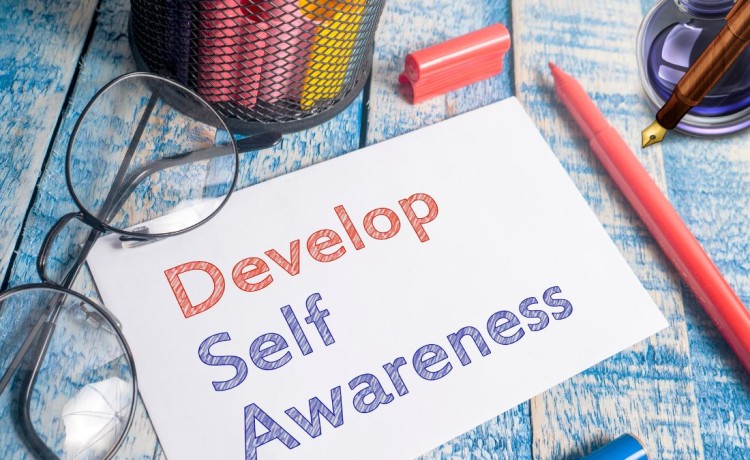Introduction
Self-awareness is a critical component for personal and professional growth, particularly for artists and surface designers. It involves understanding one’s thoughts, emotions, strengths, weaknesses, and how these elements influence behaviors and decisions. For creatives, self-awareness can lead to enhanced creativity, improved decision-making, and a more fulfilling artistic journey. This guide explores how artists and designers can cultivate self-awareness and apply it to their creative practice.
Understanding Self-Awareness
Self-awareness consists of two main components: internal self-awareness and external self-awareness. Internal self-awareness involves recognizing one’s own values, passions, aspirations, and how these align with behavior and emotions. External self-awareness, on the other hand, involves understanding how others perceive you, which can provide valuable feedback and different perspectives.
Benefits of Self-Awareness in Creative Practice
- Enhanced Creativity: Understanding your creative strengths and weaknesses allows you to leverage your strengths and work on areas that need improvement.
- Improved Decision-Making: Being aware of your values and goals helps in making decisions that are aligned with your long-term vision.
- Better Emotional Regulation: Recognizing your emotional triggers can help manage stress and prevent burnout.
- Effective Collaboration: Understanding how others perceive you can improve communication and collaboration with clients, peers, and collaborators.
Cultivating Self-Awareness
1. Self-Reflection
- Regular Journaling: Write about your daily experiences, thoughts, and feelings. Reflect on your creative processes, what inspired you, and what challenges you faced.
- Artistic Journaling: Use sketchbooks or visual journals to explore your creative thoughts and emotions visually. This can reveal patterns and insights into your creative mind.
- End-of-Day Reflections: Spend a few minutes at the end of each day reflecting on what you accomplished, what you struggled with, and how you felt.
2. Seeking Feedback
- Peer Reviews: Share your work with trusted peers and seek constructive feedback. This helps you understand how others perceive your work and can provide new perspectives.
- Client Feedback: Regularly ask for feedback from clients to understand their needs and expectations. Use this feedback to improve your creative process and client relationships.
- Mentorship: Find a mentor who can provide guidance and insights based on their own experiences. A mentor can help you see blind spots and offer valuable advice.
3. Mindfulness Practices
- Meditation: Practice mindfulness meditation to become more aware of your thoughts and feelings. This can help you stay present and focused during your creative process.
- Mindful Creation: Engage in your creative work with full attention and presence. Notice the sensations, thoughts, and emotions that arise as you create.
- Body Awareness: Pay attention to how your body feels during your creative work. This can help you recognize physical signs of stress or fatigue.
Applying Self-Awareness to Creative Practice
1. Aligning Work with Values
- Identify Core Values: Reflect on what values are most important to you, such as innovation, sustainability, or community. Ensure your creative projects align with these values.
- Purpose-Driven Projects: Choose projects that resonate with your values and passions. This leads to more meaningful and satisfying work.
2. Leveraging Strengths and Addressing Weaknesses
- Strength Analysis: Identify your creative strengths, such as color theory, composition, or conceptual thinking. Focus on projects that highlight these strengths.
- Skill Development: Recognize areas where you need improvement and seek opportunities for learning and growth. This might include taking courses, attending workshops, or practicing new techniques.
3. Managing Emotions in Creative Work
- Emotional Awareness: Recognize how different emotions affect your creativity. Use positive emotions to fuel your creative energy and find ways to manage negative emotions.
- Stress Management: Develop strategies to handle stress, such as taking breaks, practicing relaxation techniques, or engaging in physical activities.
4. Improving Collaboration and Communication
- Effective Listening: Practice active listening when working with clients or collaborators. Understand their perspectives and needs to create work that meets their expectations.
- Clear Communication: Be transparent about your creative process, timelines, and any challenges you face. Clear communication builds trust and improves collaboration.
Conclusion
Self-awareness is a powerful tool for artists and surface designers, offering a pathway to enhanced creativity, better decision-making, and overall well-being. By cultivating self-awareness through reflection, feedback, and mindfulness, creatives can align their work with their values, leverage their strengths, manage their emotions, and improve collaboration. Embrace self-awareness as a continuous practice, and watch how it transforms your creative journey into a more fulfilling and successful endeavor.
4o





